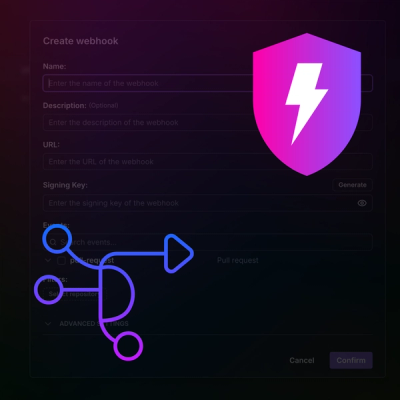
Product
Introducing Webhook Events for Pull Request Scans
Add real-time Socket webhook events to your workflows to automatically receive pull request scan results and security alerts in real time.
frequenz-api-microgrid
Advanced tools
The Frequenz Microgrid API is an service for operating and monitoring electrical components and sensors within a microgrid. It offers various functionalities related to microgrid management, including metadata retrieval, component listing, setting power levels, and controlling the state of components. The API is structured around the concept of a microgrid, which is a localized energy system composed of various interconnected components and auxiliary sensors. Microgrids are typically connected to the main grid, but can also operate independently, in which case they are referred to as islanded microgrids.
The API supports different categories of electrical components and sensors. The list of supported electrical component categories cam be found here. The list of supported sensor categories cam be found here. Note that each of these categories could have their own types, e.g., inverters could belong to the type "battery" or "PV". This information is stored in the metadata of each component and sensor, and is exposed by the API.
The API streams data from the microgrid in real-time, allowing users to retrieve the status and performance of components and sensors. It also allows users to control the microgrid by setting power levels and controlling the state of components.
The objective of this API is to provide a standardized interface for monitoring and controlling components and sensors within a microgrid. The API is designed to be vendor-agnostic, allowing users to interact with components from various vendors using the same API.
Metadata Retrieval: The API allows users to retrieve metadata about the microgrid, providing information about the microgrid's unique identifier (ID) and geographical coordinates.
Component Listing: Users can list components in the microgrid, optionally filtered by component IDs and categories.
Component Graphs: The API provides a way to list electrical connections between components. Connections are represented as pairs of component IDs that are directly connected. The connections can be visualized as a directed graph, where the nodes are components, the edges are connections between components, and the edge direction represents the direction of power flow in Passive Sign Convention.
Power Level Control: Users can set the active and reactive power levels of components that support it.
Component State Control: For components that support it, the API supports starting, stopping, and transitioning components between these and the standby states.
Bounds Management: Users can set exclusion and inclusion bounds for specific metrics of a component. These bounds define the acceptable and unacceptable ranges of metric values. E.g., one could set the inclusion bounds for a battery's DC power to be between -100kW and 100 kW, and the exclusion bounds to be between -50kW and 50kW. This would allow the battery to operate between -100kW and 100kW, but would prevent it from operating between -50kW and 50kW.
This API is designed for use in microgrid management and control systems. It can be applied in various scenarios, including:
Microgrid Monitoring: Monitoring the status and performance of components in a microgrid, allowing operators to ensure efficient energy distribution.
Optimizing Energy Storage: Managing the charge and discharge power of storage systems and generators, e.g., batteries, CHPs, etc., to optimize energy storage and consumption within the microgrid.
Flexibility Management: Managing the flexibility of components in the microgrid, e.g., by controlling the state and power draw of electrical components, to ensure that the microgrid can respond to changes in energy demand.
Performance Enhancements: Setting exclusion bounds for metrics to enhance system performance and prevent extreme values in battery SoCs or power output.
This API is designed for application developers in the energy sector who focus on the tasks of optimizing microgrid electricity flows. Its design aims to be as developer-friendly as possible, requiring no prior knowledge of any specific hardware implementation.
If you want to know how to build this project and contribute to it, please check out the Contributing Guide.
FAQs
Frequenz gRPC API for monitoring and control of microgrids
We found that frequenz-api-microgrid demonstrated a healthy version release cadence and project activity because the last version was released less than a year ago. It has 1 open source maintainer collaborating on the project.
Did you know?

Socket for GitHub automatically highlights issues in each pull request and monitors the health of all your open source dependencies. Discover the contents of your packages and block harmful activity before you install or update your dependencies.

Product
Add real-time Socket webhook events to your workflows to automatically receive pull request scan results and security alerts in real time.

Research
The Socket Threat Research Team uncovered malicious NuGet packages typosquatting the popular Nethereum project to steal wallet keys.

Product
A single platform for static analysis, secrets detection, container scanning, and CVE checks—built on trusted open source tools, ready to run out of the box.